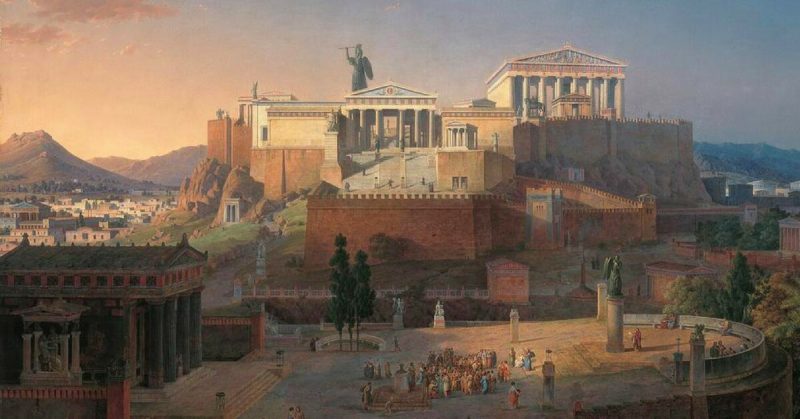Over one hundred years ago, workers uncovered an ancient cemetery while they were building an opera house and a library four miles (six km) south of Athens, Greece. The cemetery is located in the Phaleron Delta Necropolis and is believed to have been founded sometime between the 8th and 5th centuries BCE.
Last year, researchers discovered 80 skeletons of men in rows, many of which had their arms restrained with iron shackles and all of which had died from blows to the head. Since the discovery, researchers have been working to discover who these men were.
Since they were all placed in the graves in neat rows, they were likely not slaves. Since they were shackled, they seem to have been executed. Evidence points to their deaths occurring at some point between 650 and 625 BCE. This period of time in Greece’s history is noted for its social unrest.
The best guess by the experts is that these men supported Cylon. Cylon is known for two things in his life. First, he was the first recorded winner in an Olympics games. Second, in 632 BCE, he led a violent coup in an attempt to unite Athens under his leadership after being told by the Oracle at Delphi to seize control of the city during the Festival of Zeus. The Olympics were part of the Festival, so Cylon knew first hand that the city officials would be occupied during that time.
His celebrity as an Olympic champion and with the help of Theagenes, who had staged his own takeover of the city of Megara, Cylon gathered enough men to stage the coup. The nine Archons of the city did not roll over without a fight. Instead, they confronted him.
Historians know that the coup failed. Cylon retreated and hid in the temple of Athena. The Archons of the city convinced him that he would not be killed if he agreed to leave the temple and stand trial. When he agreed and left the temple, he was stoned to death. His followers were apprehended and executed.
Researchers have turned to sophisticated tests to scientifically determine the identities of the men in the grave. They are testing the DNA of the skeletons and using radiographic and isotopic tests to determine the age, geographic origin and status in society. They hope to also determine whether the men were related to each other and if they were in good health prior to their execution. The results of these tests could confirm whether the men were followers of Cylon.
It’s expected that it will take five to seven years to positively identify the remains.
1500 skeletons have been uncovered at the Phaleron site. It is one of the largest dig sites in Greece. The cemetery stretches out over 43,000 square feet (4,000 square metres). Many of those skeletons were also shackled. Some researchers acknowledge that the newly discovered skeletons may be related to Cylon’s coup, but caution people to wait for more information as there are many other possible explanations for how these men came to be executed and buried in Phaleron.
Also found in the Phaleron site are the remains of hundreds of children. Researchers are interested in examining these remains to determine more about the lifestyles and diseases of the time and thereby gaining more insight into the culture and history of the area.
Most of what we know about history is from written records, but those records are often written by and about the successful and victorious. What interests researchers most is this opportunity to learn about what life was like for these children and men who did not live as successful a life. By employing sophisticated scientific methods, they may soon have their answers.
